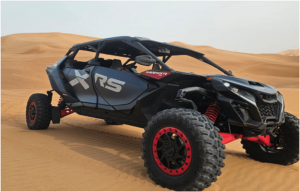What to Think About When Buying a New SUP

Stand-Up Paddleboarding (SUP) has rapidly gained popularity over the past decade, attracting enthusiasts from all corners of the world. Whether you’re a seasoned paddler or a novice looking to embark on this exciting journey, purchasing the right SUP can significantly enhance your experience on the water. Here, we delve into the key considerations you should keep in mind when buying a new SUP, including the option of paddleboarding and the logistics of taking it abroad.
Understanding Your Needs
The first step in selecting a SUP is understanding your specific needs. SUPs come in various shapes, sizes, and designs, each tailored for different activities and skill levels. Here are some primary categories to consider:
- All-Around SUPs: Ideal for beginners, these boards are versatile and stable, making them suitable for a variety of conditions, from flat water to small waves.
- Touring SUPs: Designed for long-distance paddling, these boards are generally longer and narrower, providing speed and efficiency.
- Surf SUPs: Shorter and more manoeuvrable, these boards are perfect for catching waves but may not perform as well on flat water.
- Race SUPs: Built for speed and performance, these boards are lightweight and streamlined, suited for competitive paddling.
- Yoga SUPs: With a wider and more stable platform, these boards are perfect for practicing yoga on the water.
Understanding what you want to do with your SUP will help narrow down your options and ensure you make a purchase that suits your lifestyle and skill level.
Material Matters
SUPs are made from a variety of materials, each affecting the board’s performance, durability, and price. Common materials include:
- Inflatable SUPs: Made from high-quality PVC, these boards are lightweight, portable, and durable. They’re an excellent choice for those with limited storage space or who plan on travelling frequently with their board.
- Epoxy SUPs: These rigid boards are constructed from EPS foam and covered with fibreglass and epoxy resin. They offer superior performance in terms of speed and manoeuvrability but can be more susceptible to damage and require more storage space.
- Soft-Top SUPs: Featuring a foam deck, these boards are beginner-friendly and forgiving, making them a good option for families and children.
Each material has its pros and cons, so consider where and how often you’ll be using your SUP when making your decision.
Size and Volume
The size and volume of a SUP directly impact its stability, speed, and manoeuvrability. Key factors to consider include:
- Length: Longer boards are generally faster and track better, making them ideal for touring and racing. Shorter boards are more manoeuvrable and better suited for surfing.
- Width: Wider boards offer more stability, which is beneficial for beginners, yoga enthusiasts, and paddlers in rough conditions. Narrower boards are faster but less stable.
- Thickness: Thicker boards have more volume and can support more weight, making them ideal for larger paddlers or those who plan to carry gear.
- Volume: Measured in litres, the volume of a board affects its buoyancy. Higher volume boards can support more weight and are more stable, while lower volume boards are lighter and easier to manoeuvre.
Transportation and Storage
Transporting and storing your SUP is another crucial consideration. Inflatable SUPs are highly portable and can be deflated and packed into a backpack, making them an excellent option for those with limited space or who plan on taking their board abroad. Rigid boards, while offering superior performance, require more storage space and a suitable vehicle for transport.
Taking Your SUP Abroad
For those with a passion for exploring new waters, the logistics of taking your SUP abroad are vital. If you plan to travel frequently with your board, opt for an inflatable SUP. These boards are easy to pack and transport, fitting into standard luggage allowances and making air travel hassle-free. For detailed tips on how to prepare for international paddleboarding adventures, check out this guide on taking it abroad.
Accessories and Safety Gear
Investing in the right accessories and safety gear can enhance your paddleboarding experience. Essential items include:
- Paddle: Choose a paddle that suits your height and paddling style. Carbon fibre paddles are lightweight and offer excellent performance, while aluminium paddles are durable and affordable.
- Leash: A safety leash is crucial for keeping your board close if you fall off, preventing it from drifting away.
- Personal Flotation Device (PFD): Safety should always come first. A PFD is essential, especially in open water or challenging conditions.
- SUP Bag: Protect your board during transport with a padded SUP bag, especially if you opt for a rigid board.
- Pump: If you choose an inflatable SUP, a high-quality pump will make inflating your board quick and easy.
- Repair Kit: For inflatable SUPs, having a repair kit on hand can be invaluable for fixing minor damages on the go.
Budget Considerations
Lastly, your budget will play a significant role in your decision. SUPs can range from a few hundred to several thousand pounds, depending on the type, material, and brand. While it’s tempting to go for the cheapest option, investing in a quality board can enhance your experience and save money in the long run by avoiding frequent replacements or repairs.
In conclusion, buying a new SUP involves careful consideration of your needs, the board’s material, size, and volume, as well as practical aspects like transportation and storage. By taking these factors into account, you’ll be well-equipped to choose the perfect SUP for your adventures, whether paddling locally or taking it abroad. Happy paddling!






